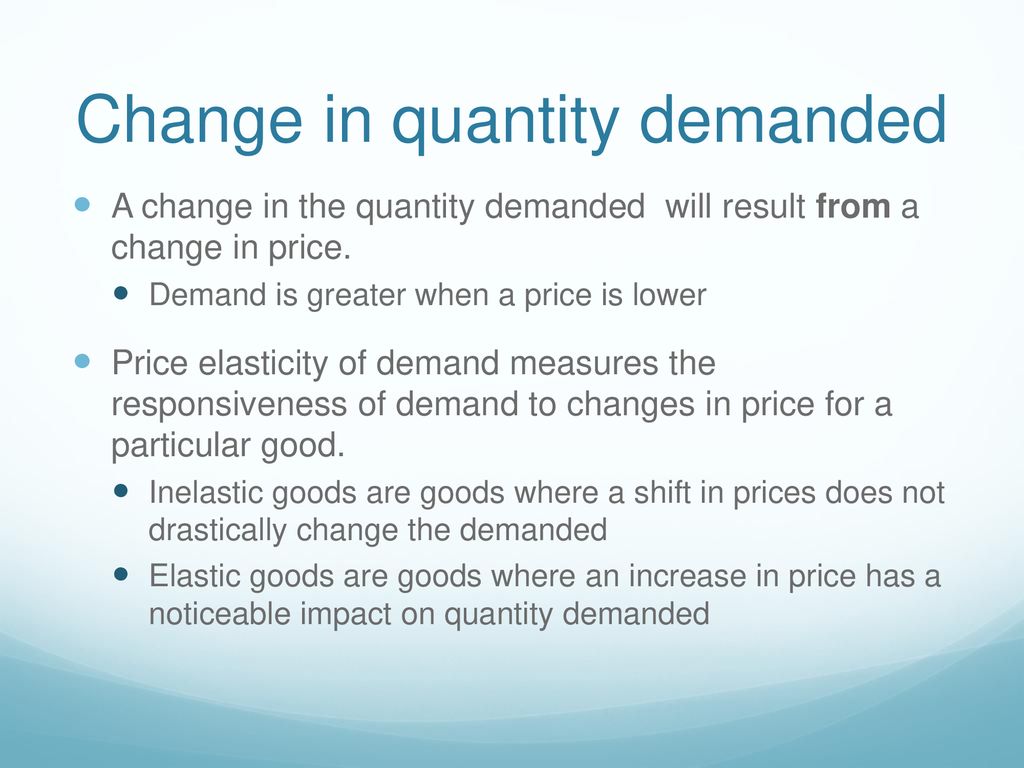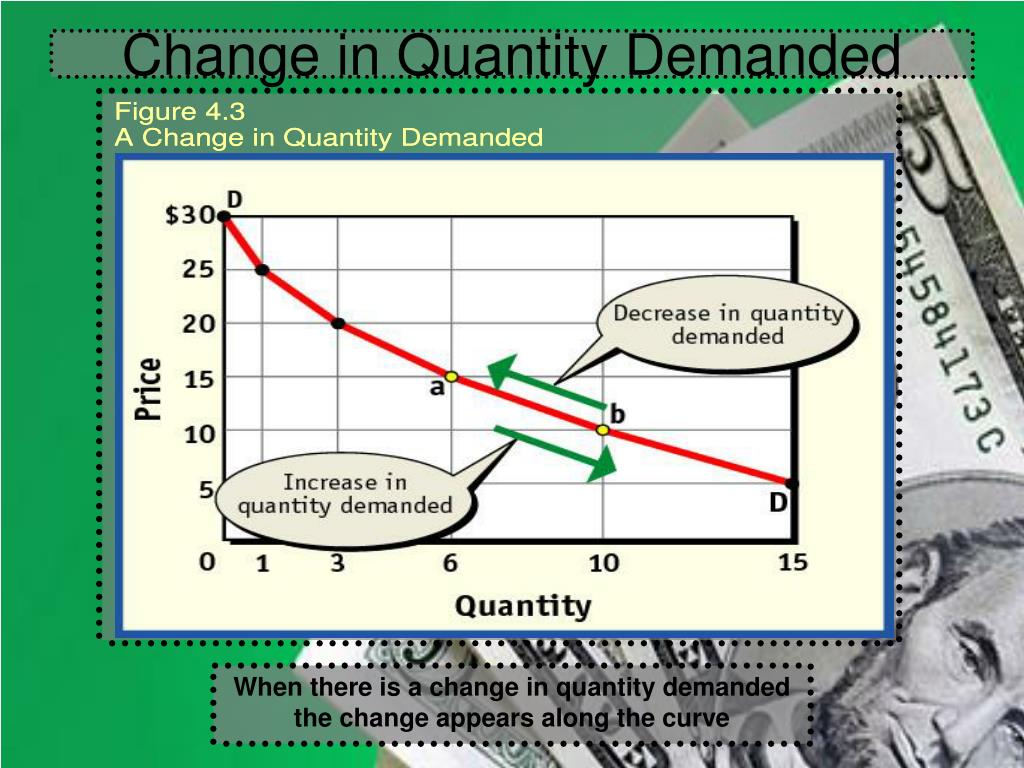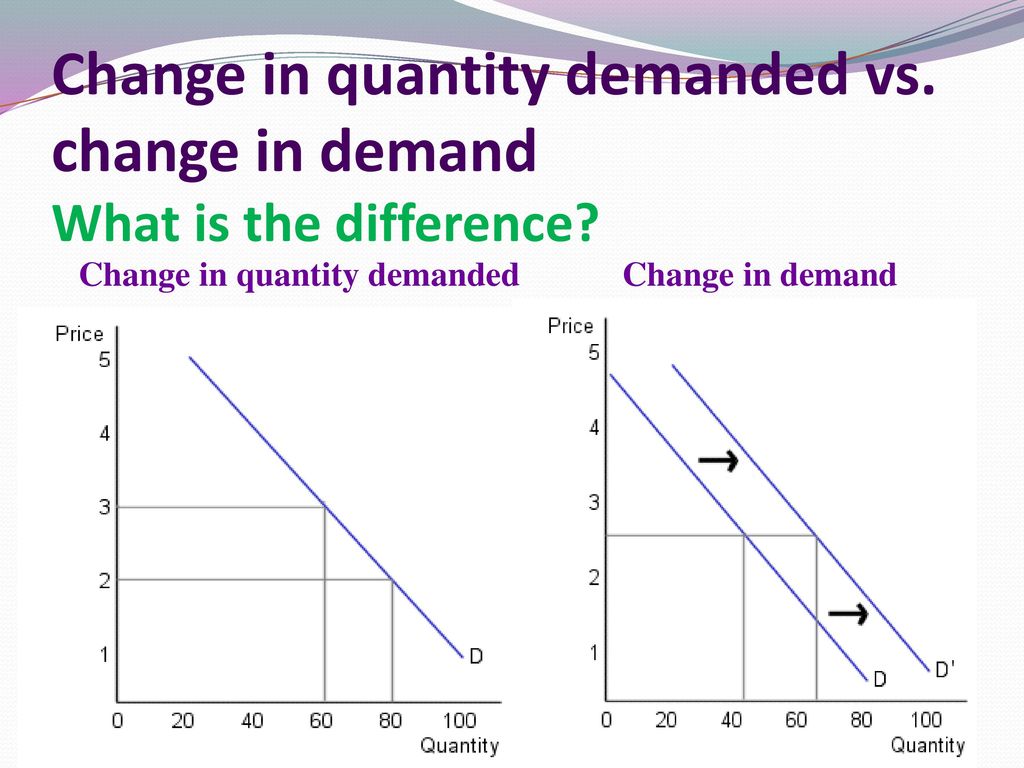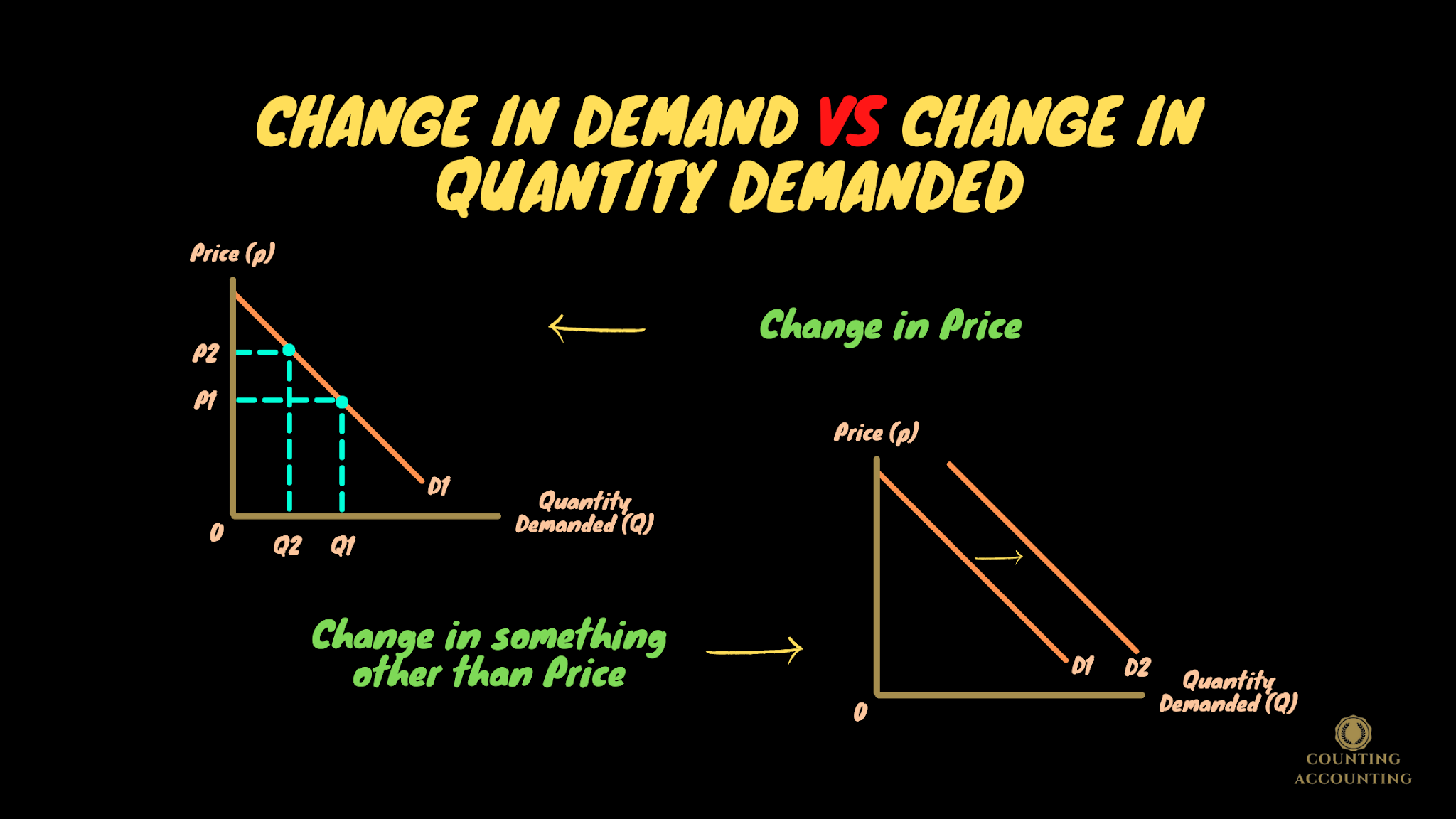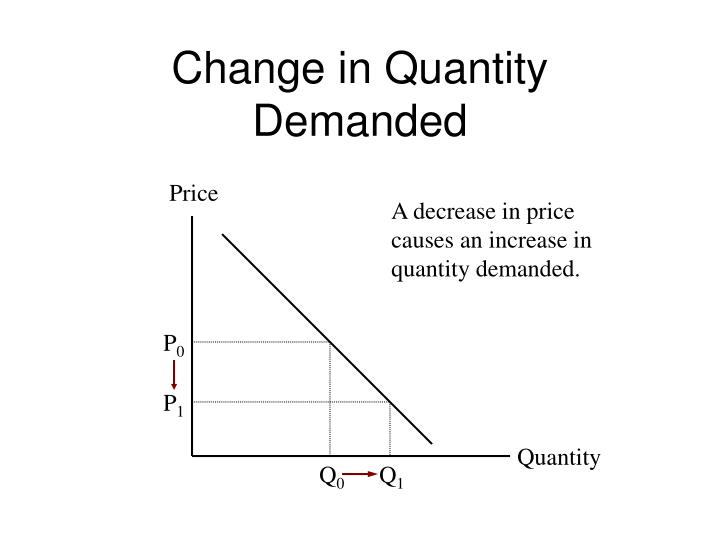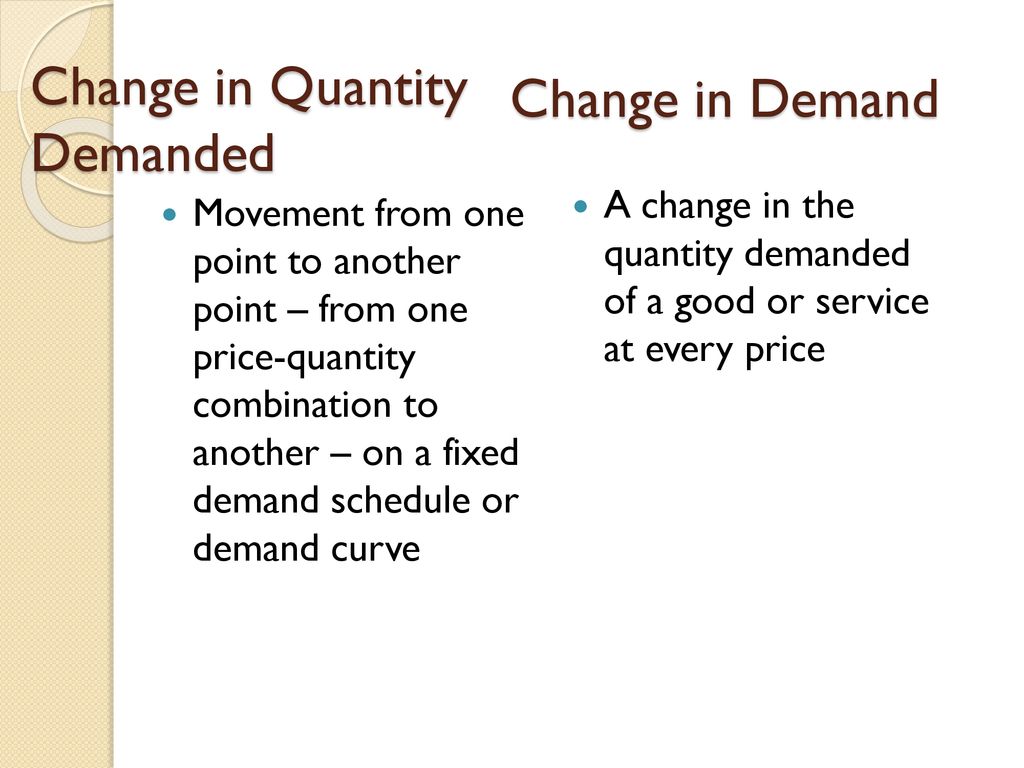A Change In Quantity Demanded Is Represented By
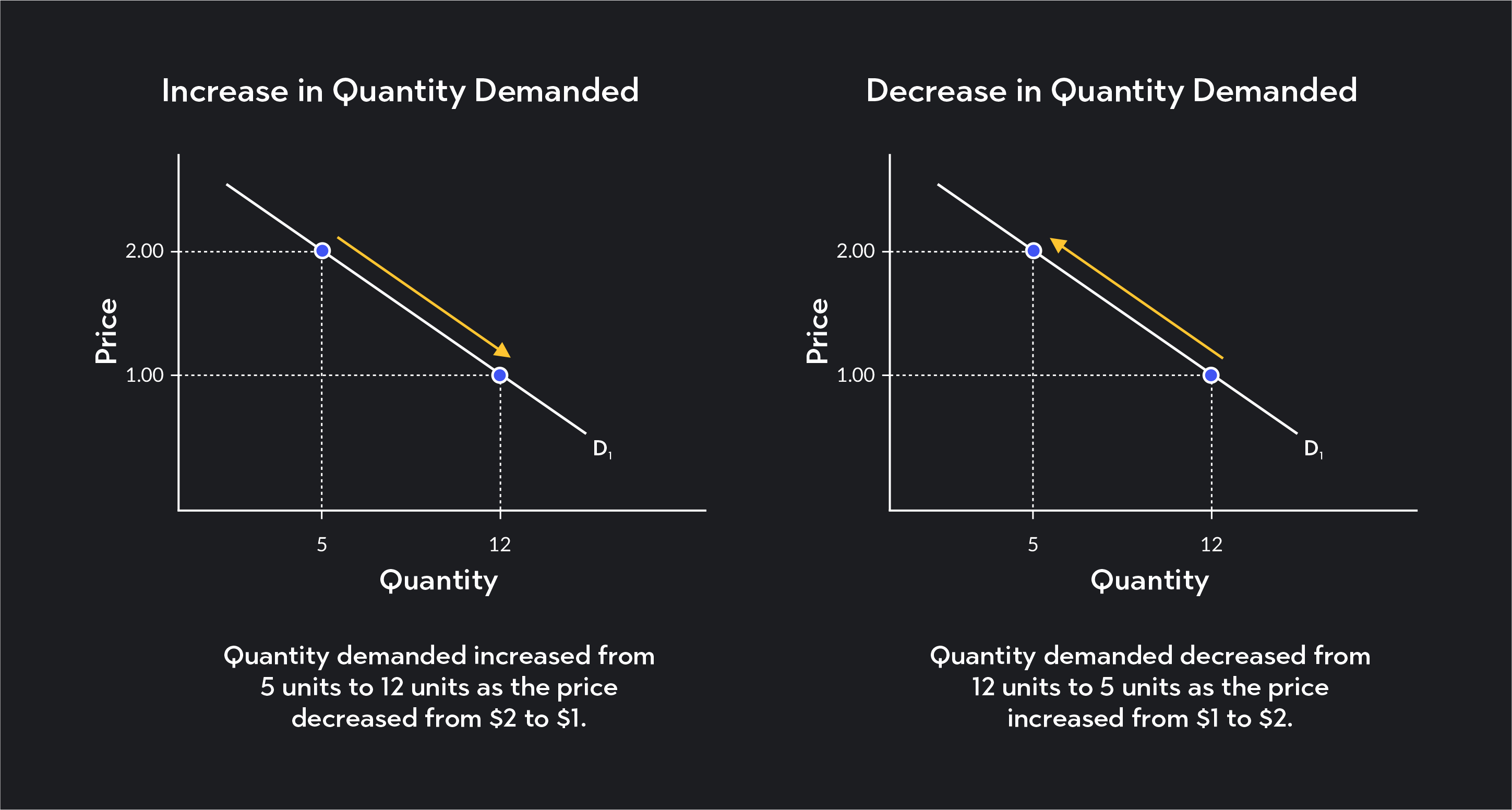
Imagine strolling through a bustling farmer's market on a sunny Saturday. The air is filled with the aroma of ripe strawberries, freshly baked bread, and blooming flowers. You notice a vendor selling juicy red apples. Last week, they were priced at $2 a pound, and you happily filled your bag. But today, the sign reads $1.50 a pound – and the crowd around the apple stand has noticeably swelled.
This shift, this visible increase in apple-enthusiasts drawn in by the lower price, perfectly illustrates what economists refer to as a change in quantity demanded. It's a fundamental concept in understanding how markets function and how consumers respond to price fluctuations.
A change in quantity demanded is represented by a movement along the existing demand curve. This signifies that consumers are buying more or less of a good or service solely because of a change in its price, assuming all other factors remain constant.
Understanding Demand and Its Curve
To truly grasp the significance of a change in quantity demanded, it's important to first understand the basics of demand itself. Demand, in economics, refers to the quantity of a good or service that consumers are willing and able to purchase at various prices during a specific time period.
The demand curve is a graphical representation of this relationship, typically sloping downward from left to right. This downward slope reflects the law of demand: as the price of a good or service decreases, the quantity demanded generally increases, and vice versa.
The demand curve illustrates the relationship between price and quantity demanded, showing how many units consumers will purchase at different price points, assuming all other factors affecting demand remain constant.
The Crucial Distinction: Quantity Demanded vs. Demand
It's essential to distinguish between a change in quantity demanded and a change in demand itself. A change in quantity demanded, as mentioned, is simply a movement along the existing demand curve, triggered solely by a price change.
A change in demand, on the other hand, represents a shift of the entire demand curve. This occurs when factors other than price influence consumers' willingness or ability to buy a product.
These factors, often referred to as determinants of demand, include changes in consumer income, tastes and preferences, expectations about future prices, the prices of related goods (substitutes and complements), and the number of buyers in the market.
Factors That Shift the Demand Curve
Let's delve deeper into these determinants of demand. Imagine, for example, that a widely circulated news report highlights the numerous health benefits of eating apples. This would likely lead to an increase in demand for apples, regardless of their price.
This shift in consumer tastes and preferences would be represented by the entire demand curve shifting to the right, indicating that at every price point, consumers are now willing to buy more apples than before.
Similarly, an increase in consumer income, assuming apples are a normal good, would also likely lead to an increase in demand, shifting the curve to the right. Conversely, if the price of oranges (a substitute for apples) were to increase, the demand for apples would likely rise, again shifting the curve.
Examples in Action: Real-World Applications
The concept of a change in quantity demanded is readily observable in everyday life. Consider the pricing strategies employed by retailers. When a store offers a "buy one, get one free" promotion, they are effectively lowering the price per unit, leading to an increase in the quantity demanded.
This is a classic example of a movement along the demand curve. Consumers are not necessarily more fond of the product; they are simply buying more because it's cheaper.
Another example can be seen during seasonal sales. When winter coats go on clearance at the end of the season, the price drops, and consumers rush to purchase them, resulting in a higher quantity demanded. Again, this is a movement along the demand curve, not a shift of the curve itself.
The Significance for Businesses and Policymakers
Understanding the difference between a change in quantity demanded and a change in demand is crucial for both businesses and policymakers. Businesses need to accurately assess the factors driving changes in sales to make informed decisions about pricing, production, and inventory management.
If a business observes an increase in sales following a price reduction, it can confidently attribute this to a change in quantity demanded. This informs their pricing strategy and helps them optimize revenue.
Policymakers also rely on these concepts to understand the impact of taxes, subsidies, and regulations on market outcomes. For example, a tax on a particular good will increase its price, leading to a decrease in the quantity demanded. Understanding the magnitude of this decrease is crucial for assessing the effectiveness of the tax policy.
According to data from the U.S. Department of Agriculture (USDA), consumer spending on fresh fruits, like apples, is often directly correlated with pricing strategies implemented by retailers, highlighting the real-world impact of changes in quantity demanded.
Beyond the Basics: Elasticity and Responsiveness
The concept of price elasticity of demand builds upon the understanding of a change in quantity demanded. Elasticity measures the responsiveness of quantity demanded to a change in price.
If a good has elastic demand, a small change in price will lead to a relatively large change in quantity demanded. Conversely, if a good has inelastic demand, a change in price will have a relatively small impact on quantity demanded. Essential goods, like medicine, often have inelastic demand.
Understanding price elasticity is crucial for businesses when setting prices. If a product has elastic demand, a price increase could significantly reduce sales, while a price decrease could substantially boost them. Inelastic goods offer more pricing flexibility.
Reflecting on the Dynamics of Demand
The farmer's market scenario, the clearance sales, and the retailer's promotions – all these everyday occurrences underscore the fundamental economic principle that a change in quantity demanded is represented by a movement along the existing demand curve.
It's a reminder that consumers are constantly reacting to price signals, adjusting their purchasing decisions based on the affordability of goods and services. This dynamic interplay between price and quantity demanded shapes the market landscape and influences the decisions of both businesses and policymakers.
As we navigate the complexities of the economy, a clear understanding of this concept remains essential for making informed choices and comprehending the forces that drive our consumption patterns.





